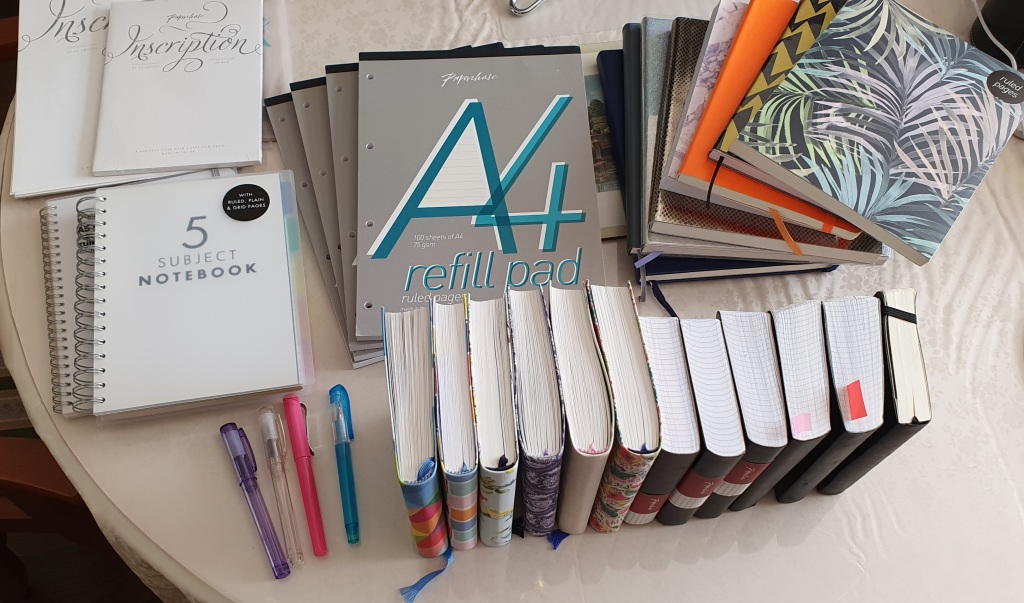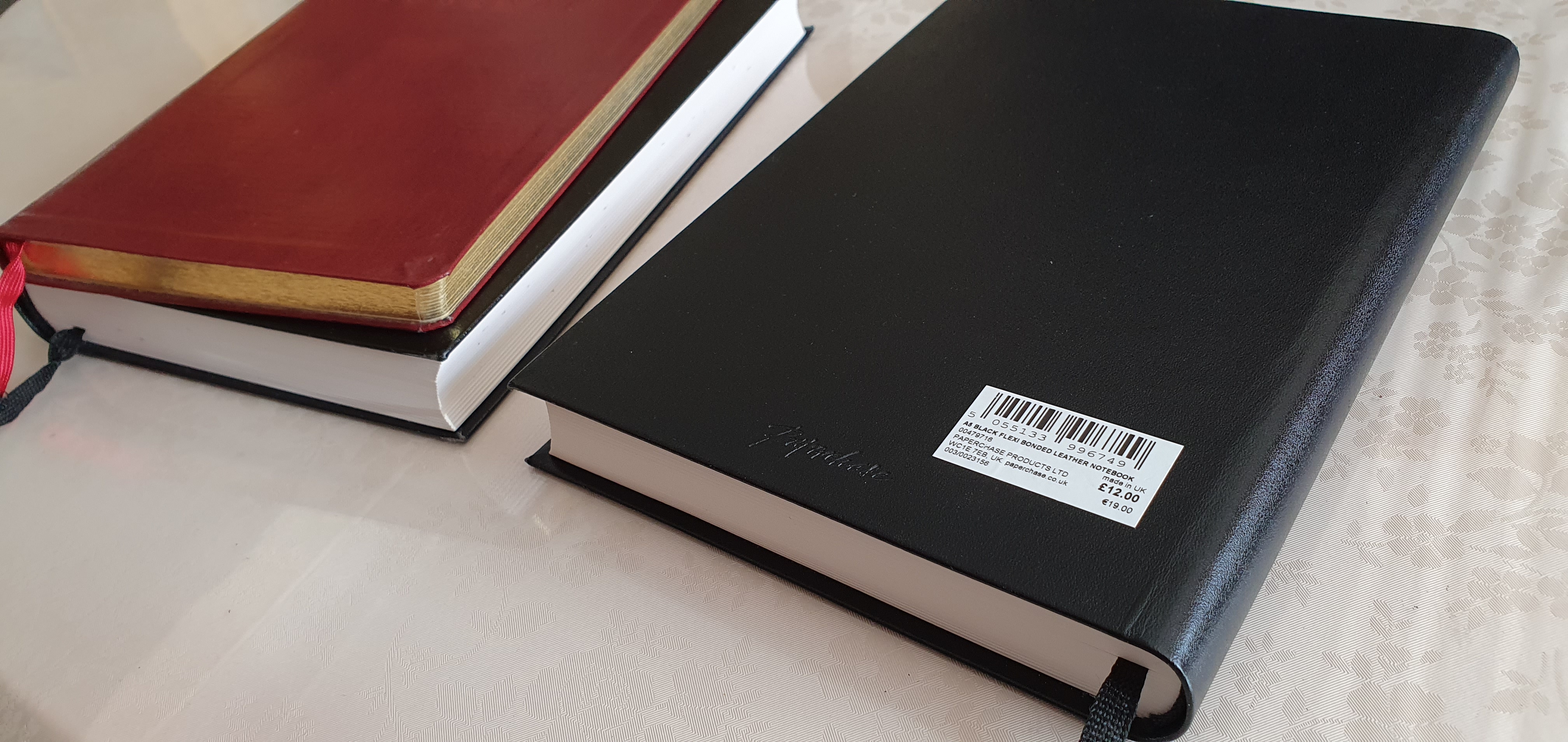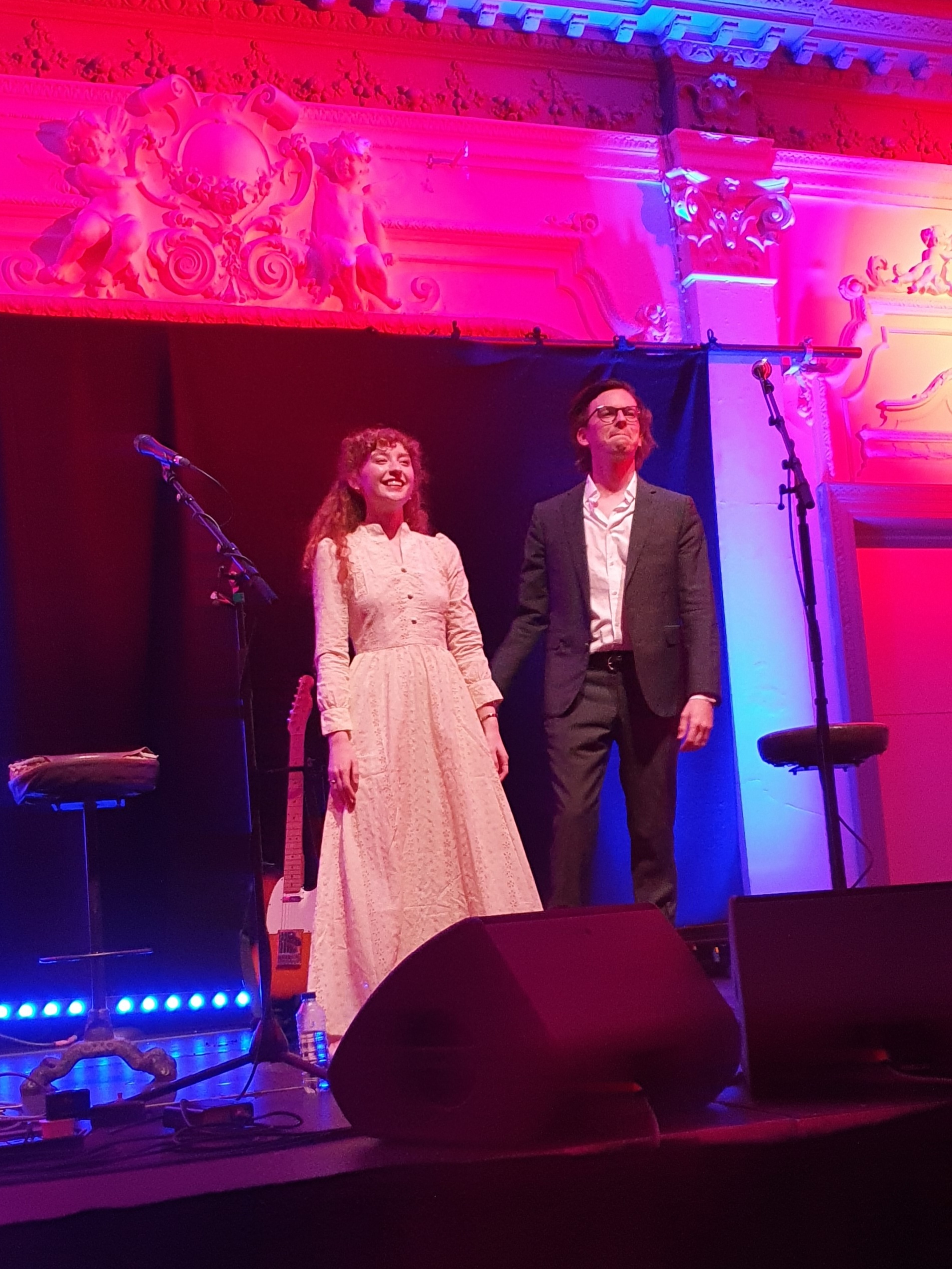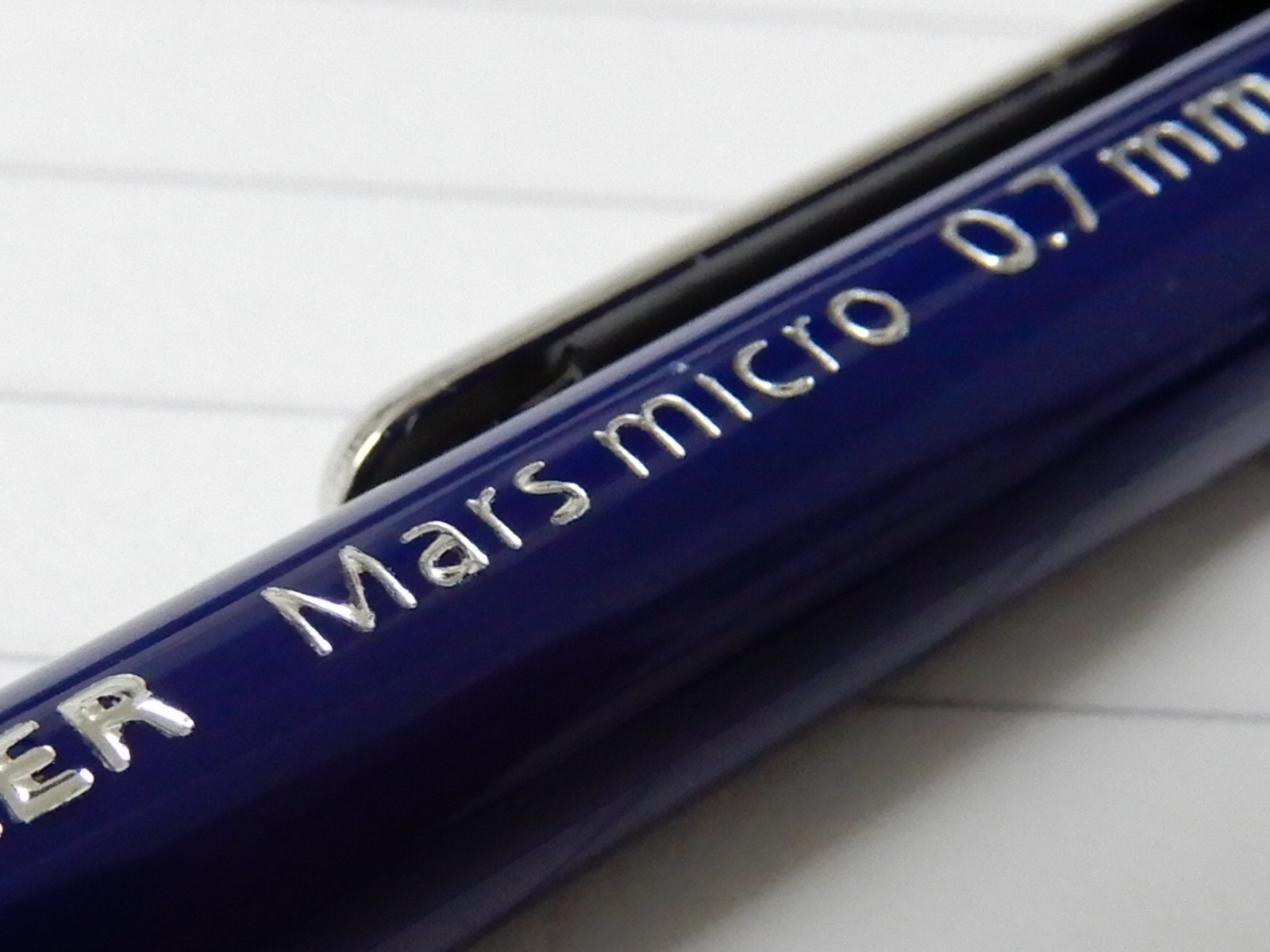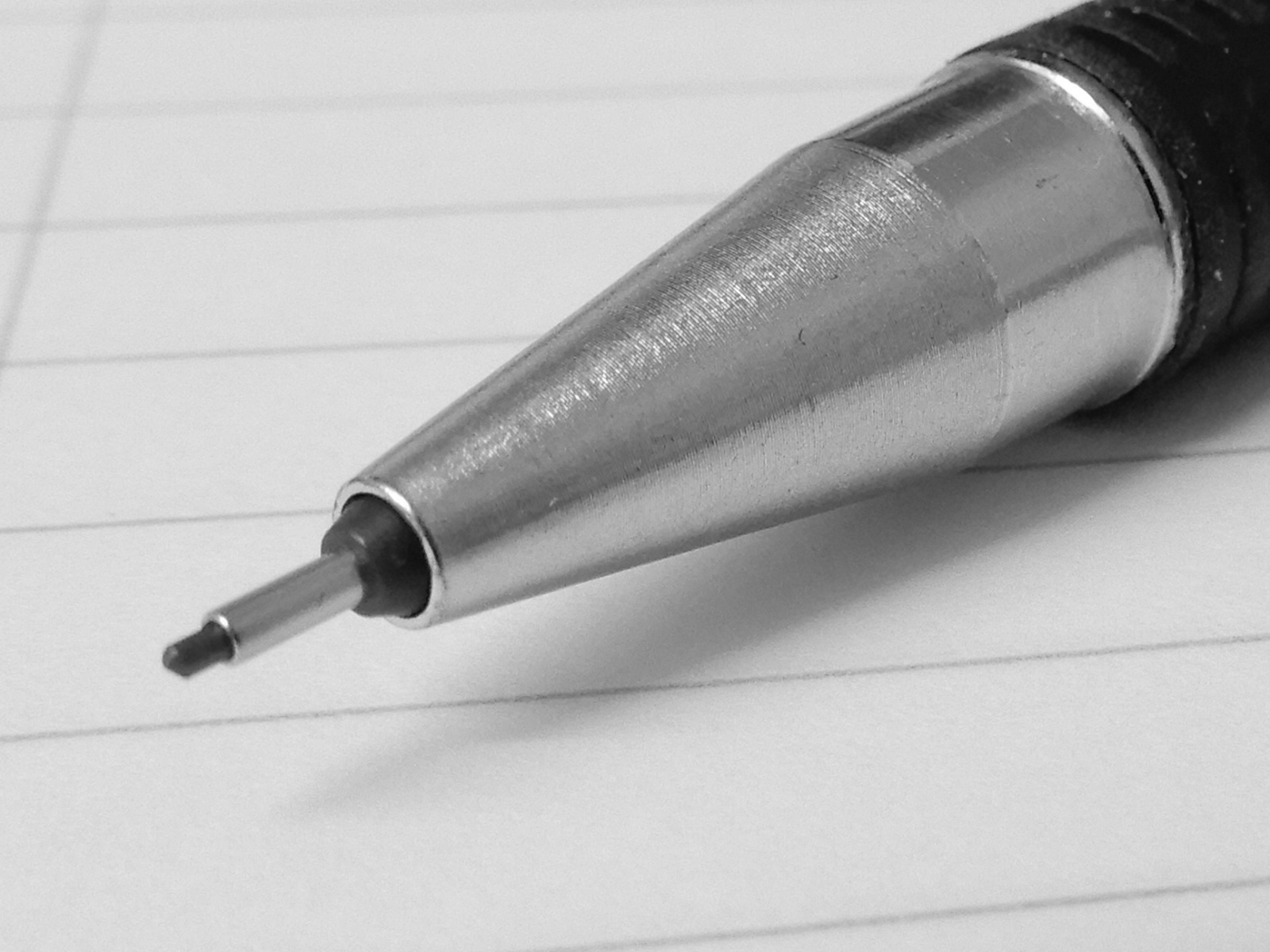Picture the scene. You are in a shop and are considering a purchase of a new fountain pen. You have circled the pen display a few times and are now at the stage of asking to see the one that has caught your eye.
I am assuming that the pen is not in a sealed blister pack and that you are actually able to handle it. The pen is put on the counter for your inspection. You turn it over in your hands. Assuming that there is nothing that immediately puts you off, the next step is to ask to try the pen.
A bottle of ink and a test pad are produced. You dip the pen and then comes the moment of truth. The pulse quickens. How does it write?
It occurs to me that you then have a tricky task of weighing up multiple factors and reaching a decision within a matter of, perhaps, less than a minute. Clearly you are not able to carry out an exhaustive inspection and writing tests, at your leisure. You have one pen, one paper and one ink. You need to be fully focused and aware of what you are looking for and what you are looking to avoid. And so today, I thought it may be of assistance to collect together a few thoughts on some of the factors that you might want to have in mind.
Having jotted down a list of random points, these seemed to fall into two groups, namely, How does it Feel? And How does it Perform? Of course, these are only my suggestions and you may wish to create your own list.
How does it Feel?
Smoothness. This is probably the first and for many, perhaps the only, factor considered when test-driving a pen. How the pen feels as the nib moves across the paper depends on several factors. Are the tines aligned? Misaligned tines is a common issue even with new pens and fortunately one that is usually possible to correct yourself. Also, is the nib well polished? You will soon notice if it is not as the tip feels as if is caked in rust. The effect of maximum smoothness is often described as “buttery.” The opposite extreme is “scratchy”. If your pen-purchasing trip was pre-meditated, bringing a loupe to inspect the nib tines alignment is very useful although you may look a bit like a diamond merchant.
Give. Or Springiness. Or Softness. This is a lovely quality in a nib. Whether you wish to have it, may depend upon what you are used to and how you write. Nibs differ in firmness, from a very rigid and unyielding nib sometimes termed “a nail”, to the very soft, flexible nib, sometimes called “a wet noodle”. If your experience has always been to write with a firm nib and you do not apply a lot of pressure expecting line width variation and shading this may not be an issue for you. But a softer nib gives a more cushioned ride and allows for easier application of pressure to generate a wetter and broader line here and there as you write. This in turn lays down more ink in places, creating darker lines and thus adding variety and expression to your writing. It is said that generally, gold nibs are softer than stainless steel. This may be true if both were made exactly the same way. But with good design, it is also possible to have a stainless steel nib that is on the softer side and I have found this with the Parker Sonnet and the Pelikan M205. And not all gold nibs are soft.
Feedback. This refers to the information that the nib sends back to you as you write. The feel of the nib on the paper. Rather like the handling and feel of your car tires on the road. It is rather more difficult to describe and is easier to identify when comparing a few different pens at the same time. Basically you want a pen that gives a little feedback, letting you know that it is in contact with the paper, but not too much or too little. Too much, means that you are uncomfortably aware of resistance and scraping. Too little and it is like skiing in a white-out, you barely know whether your nib is touching the paper at all.
Tooth. Some of these terms have different meanings for different people. To me it refers to a catchiness, or digging in of the pen to the paper, too much of which is an undesirable feature and a symptom of misaligned tines, where the inner edge of a tine catches on the paper when you move the pen in a certain direction. It could also mean the nib having a slightly rough surface to grip on paper and help the pen to lay down ink. That is, the opposite of being over-polished and struggling to write on smooth paper.
Length. Is the pen long enough for you? A pen that is short when un-capped, can often be lengthened by placing the cap on the back of the barrel (“posting”) which adds length but also adds weight and may upset balance if the cap is heavy and does not post deeply. A pen which is too short feels a little awkward as the back of the barrel does not reach back far enough to rest comfortably on the crook of your hand between thumb and first finger.
Weight. You will want a pen that is a pleasant weight as you write. Pens with a metal body are generally more heavy than those made of resin, other things being equal. Feel the weight as you write. Are you going to use the pen posted or non-posted? Here, you may wish to avoid a pen that is unusually heavy if you plan to use it for very long writing sessions. But a pen that is too light may sometimes feel insubstantial. Then again, people wrote with a quill in the past which was as light as a feather! A good fountain pen should write under its own weight, with little or no extra downward pressure required and so a bit of weight is a good thing. Having said that, I have a few pens that weigh next to nothing and I also enjoy writing with them very much.
Balance. Slightly harder to explain than weight, this usually refers to whether a pen feels back heavy or not. First, think whether you are going to use the pen posted or non posted. Here, you first need to check whether the cap does actually post. Does it fit nicely on the back of the barrel? Is it secure or does it fall off or slide around? If you plan to write with the cap posted, then it is important to see how the weight distribution feels in your hand. A poorly balanced pen may feel a bit like writing with a 12 inch stick with a tennis ball on the back. Once you become aware of discomfort in this respect, it becomes more annoying. (All is not lost however. You may rescue a short and unbalanced pen by finding another light weight cap that fits, to post instead).
Comfort. This, like many of these points, is a personal thing and depends on several factors, such as section width, material and finish, position and sharpness of screw threads if any, the presence of a “step” down in diameter from barrel to section, and balance as mentioned earlier. As to section width, try to decide whether this is too wide for you or too narrow. I was initially put off buying the Sheaffer Sagaris which has a fairly skinny section but overcame my prejudices and love it now. Also, I was aware on buying a Cross Century II in black lacquer and chrome, that it was a very slender pen but the appeal of its sheer attractiveness outweighed this for me.
How does it Perform?
Write a few lines with the pen in your usual handwriting. How does it look?
Nib width. The width of the tip is mostly what determines the width of the line and the basic choice, if any, is usually between Fine, Medium or Broad. Rarely, there are extra fine and extra broad (or double broad) options. Then there are stubs and italics. Most pens seem to be sold with Medium nibs. If your writing is small, a Fine may give a line that is more in proportion to the height of your letters and help to keep some white space in the loops of your letters and so improve neatness and legibility. Conversely a Broad nib gives a thicker bolder line, suited to larger writing.
Shading. The attractive effect of ink being put down in your letters in varying densities, giving light and dark shades. Applying a little pressure perhaps on your downstrokes or the tails of your g’s and y’s for example, spreads the tines, lays down more ink, which pools in the indentation created in the paper thus giving the effect of two coats of ink instead of one. Not all inks do this. A nib that has some flex to it is a help. My Platinum 3776 Century with a 14k gold Broad nib, paired with Waterman Harmonious Green Ink seems to produce effortless shading.

Line width variation. Pressing down on the nib a little spreads the tines and widens the line of ink. If you go too wide, you may produce two separate parallel lines (“railroading”) or if you go really too far, you may bend (“spring”) and ruin the nib, such that it will not resume its normal shape. Also, variation in line width is a product of the nib producing a narrow line if moved in one direction (say, from side to side) or thicker if moved in another direction (up and down) and so if you hold the pen at a consistent angle to the page as you write, this will occur naturally. A calligraphy nib or a stub nib does this.

Flow. The degree of ink flow to your nib, is crucial. Too little, and the pen does not write. If there is not enough ink getting to the tip of the nib, there is also insufficient “lubrication” of the nib on the paper, to provide a pleasant writing experience. It is not just a smooth nib that gives a smooth writing experience, but having a cushion or layer of ink, on which to glide across the page. Without this, you would then be aware of resistance and drag as you move the pen, which makes for a tiring and unpleasant writing experience. Too much flow on the other hand, and you have a “gusher”, a pen that lays down very wet ink, which stays wet even after you have written another three or so lines. This is more likely to “bleed” through or least show through, to the other side of the paper and to “feather” (spread out) on the side that you are writing on.
Unfortunately it is difficult to gauge how good the ink flow will be, when you have just dipped a pen, as the nib and feed will be wet and this is not representative of how the pens will write when inked normally. A pen that may look very wet and off-putting, may in fact have a good flow when filled properly and once the feed is working in normal conditions and not saturated.
Skipping. Also difficult to gauge in shop counter conditions with the pen only dipped and not yet run in to your writing angle. This is the annoying tendency of a nib to miss out part of a letter or word as you write, so that you have to go back and write it again. This may be due to a combination of an overly polished nib plus very smooth paper, or the nib being too rounded and not yet having any flat surface with which to make contact with the paper. Happily this sometimes resolves itself once you have had a pen a few weeks and written it in, gradually forming a flat surface at the angle at which you hold you nib to the paper.
Hard starts. Again, dipping a pen and then trying it straightaway, is not going to tell you whether the pen will suffer from hard starts. This refers to the pen not being ready to write when you want it to. If a pen has been standing, nib-upwards, for a few days or longer, or been carried upright in a pocket ink drains down away from the nib and so takes time to reach the tip of the pen again, when you try to write with it. Also, pens which have a good seal when capped, usually by means of an “inner cap”, are better at staying ready to write and avoiding drying out. Pens with large nibs may fare worse at this. I don’t like to think of it as a fault, as it is just gravity really and I don’t know how it is that some pens (my Pelikan M205 for example) always seem primed and ready to go even after weeks of inactivity.
Conclusion.
This is a long list of factors. Each of these topics can be a dissertation on its own. So, who considers all these things in the heat of the moment when buying a pen? Probably nobody. Even as a keen pen enthusiast myself, I am usually too blinkered and excited to make a considered judgment when faced with a shiny new pen. For larger purchases, it is good to do your homework beforehand, perhaps weighing up reviews and a few of the many useful resources now available from the internet, except for those spur of the moment purchases. But from my experience, it is good at least to be aware of a few of the main factors which are of particular importance to you and your writing needs and preferences. Do also check whether there is a guarantee and keep your receipt. Happy Shopping!

